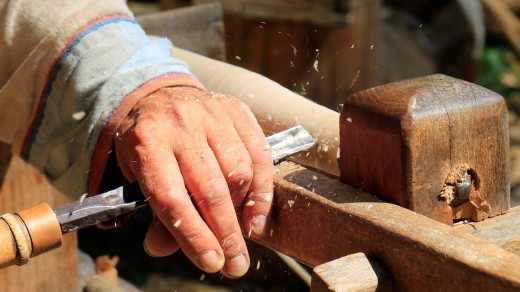8 woodworking hacks for the beginners advice, Builder wood work help guide, Best tools tips
8 Woodworking Hacks For The Beginners Guide
24 Nov 2020
Woodworking is fun, but for beginners, it can be challenging. As you know, practice makes perfect, but who said you couldn’t use some tricks to work smarter and more efficiently? Here are some handy woodworking tips which will help you save money, time, and effort – or all three at the same time.
And even if you’re a pro, you still may find some of these tips very useful. Who doesn’t want to learn some shortcuts to make their life easier? In the list below, you’ll surely find some hacks that will make you think, “how come I didn’t think about it before?” Implement them when working with wood and drills, remember about safety, and enjoy.
1. Cleaning Up the Glue
Do you know how long does wood glue take to dry? Even up to several hours, nobody likes it when their tools are sticky and their workplace is a mess. Cleaning it can be tricky, too – using a wet cloth or sponge can make the wood swell. A better solution is to apply a little sawdust to the glue when it’s still wet and rub around. Sawdust will absorb the excess glue, and your wood will remain dry – just the way you want it to be.
And if you happen to get glue on your hands, it’s even easier to clean them up. Just rub the hands together, and wet glue will flake off. This tip will come in handy especially if you have kids who are getting into woodworking as well. If that interests you, resources such as Sawinery offer a lot of tips.
2. Using Wax Paper as a Cover
Have you ever glued your wood to the workbench by mistake? If you don’t want to deal with the mess, prevent it. Put some wax or parchment paper under the wood you’re gluing, so your workbench will stay clean, and your work won’t stick to the surface when drying. And, if you don’t have scissors, you can always use a straight metal edge or a ruler to rip the paper clearly.
3. Thinning the Glue
It can be pricey to replace the thickened wood glue. Don’t throw it right away: depending on the glue type, there’s always a way to thin it. Firstly, tap the container on a hard surface. If this doesn’t work, try other ways: for water-based glues, you can add some water (no more than 5% of the whole volume); for liquid hide glue – gently heat the container in a pan of warm (not hot!) water.
Ultimately, you can always add a drop or two of vinegar to your wood glue and mix – it works miracles!
4. Measuring Drill Depth
You don’t always have to drill through a material, and sometimes the hole has to be a certain depth. If you find yourself in such a situation, make a simple depth marker: just wrap a piece of tape around the appropriate point on the drill. Or, if you feel fancy, buy a set of drill stops.
5. Making a Drill Bit
Very often, finding the right size drill bit is a challenge. You may have given it to someone or lost, or simply bought the wrong one – but don’t worry. Use a nail instead – clip off the head, attach it to the drill – and voilà! It’s not a cost-saving trick, but this way, you’ll make the right sized hole every time.
6. Filling a Hole
When removing a nail from the wall, you’re always left with a hole – and not everyone has spare spackling paste at home. There’s a simple solution: use toothpaste. Just apply it to the hole, wait about two hours till it’s completely dry, and paint over. No one will ever know.
7.Organizing Sandpaper
If you’re using all kinds of specific grits or types of sandpaper, your storage may be a mess. Use a simple accordion-style file folder, and sort the sandpaper by grit. You can also put the smaller sized pieces in the special pouch. This way, you won’t have to look for specific grits or sizes when you need them – everything’s organized.
To make your life easier, you can also use a sanding block – it distributes the pressure evenly, and this way, you’ll get a faster and more efficient result. Just remember to change sandpaper often!
8. Sharpening Blades
There’s no easier way to make a mistake or cut yourself than with a dull knife. Always make sure your knives are sharp. And don’t worry, if you don’t have a sharpener – just take a regular ceramic mug, turn it upside down and scrape the knife against the bottom ring. It’s not a sharpening stone, surely, but it can be helpful when you need a sharp knife right now.
8 woodworking hacks for the beginners – Summary
As you can see, all the problems can be solved with some woodworking tips. Just remember: work smarter, not harder. Look for the solutions to make your woodworking experience more enjoyable, and put some effort into making a more quality product rather than fighting with some minor issues like a missing piece of sandpaper. Use the professional hacks you’ve learned, make your life easier, and have fun.
Comments on this 8 Woodworking Hacks For The Beginnersh article are welcome.
Edinburgh Architecture
Moxy Hotel Fountainbridge

image courtesy of architects practice
Moxy Hotel Fountainbridge
Artisan Real Estate Property Development
Artisan Real Estate Property Development
Comments / photos for the 8 Woodworking Hacks For The Beginners page welcome

